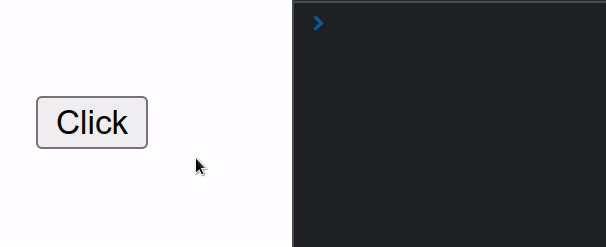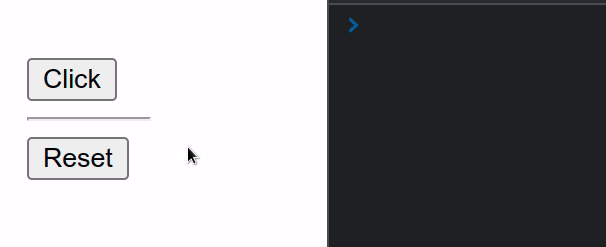Prevent multiple Button clicks in React
Last updated: Apr 6, 2024
Reading time·2 min

# Prevent multiple Button clicks in React
To prevent multiple button clicks in React:
- Set an
onClickprop on the button, passing it a function. - When the button gets clicked, set its
disabledattribute totrue.
const App = () => { const handleClick = event => { event.currentTarget.disabled = true; console.log('button clicked'); }; return ( <div> <button onClick={handleClick}>Click</button> </div> ); }; export default App;
We set an onClick prop on the button element. When the button gets clicked,
the handleClick function is invoked.
We used the currentTarget property on the event to get a reference to the
button and set its
disabled
attribute to true.

The currentTarget property on the event gives us access to the element that
the event listener is attached to.
Whereas the target property on the event gives us a reference to the element
that triggered the event (could be a descendant).
Alternatively, you can use a ref to prevent multiple button clicks in React.
# Prevent multiple Button clicks using a ref
This is a three-step process:
- Set a
refprop on the button element. - When the button is clicked, set the ref's
current.disabledproperty totrue. - Optionally implement a reset button.
import {useRef} from 'react'; const App = () => { const buttonRef = useRef(null); const handleClick = event => { buttonRef.current.disabled = true; console.log('button clicked'); }; const handleReset = event => { buttonRef.current.disabled = false; }; return ( <div> <button ref={buttonRef} onClick={handleClick}> Click </button> <hr /> <button onClick={handleReset}>Reset</button> </div> ); }; export default App;

The useRef() hook can be passed an
initial value as an argument. The hook returns a mutable ref object whose
.current property is initialized to the passed argument.
current property on the ref object to get access to the button element on which we set the ref prop.When we pass a ref prop to an element, e.g. <button ref={myRef}>, React sets
the .current property of the ref object to the corresponding DOM node.
useRef hook creates a plain JavaScript object but gives you the same ref object on every render. In other words, it's pretty much a memoized object value with a .current property.Now we can directly reference the button and set its disabled property via
buttonRef.current.disabled.
You should use this approach if you need to enable the button later on in your code.
If you need to change a button's text on click, check out the following article.

